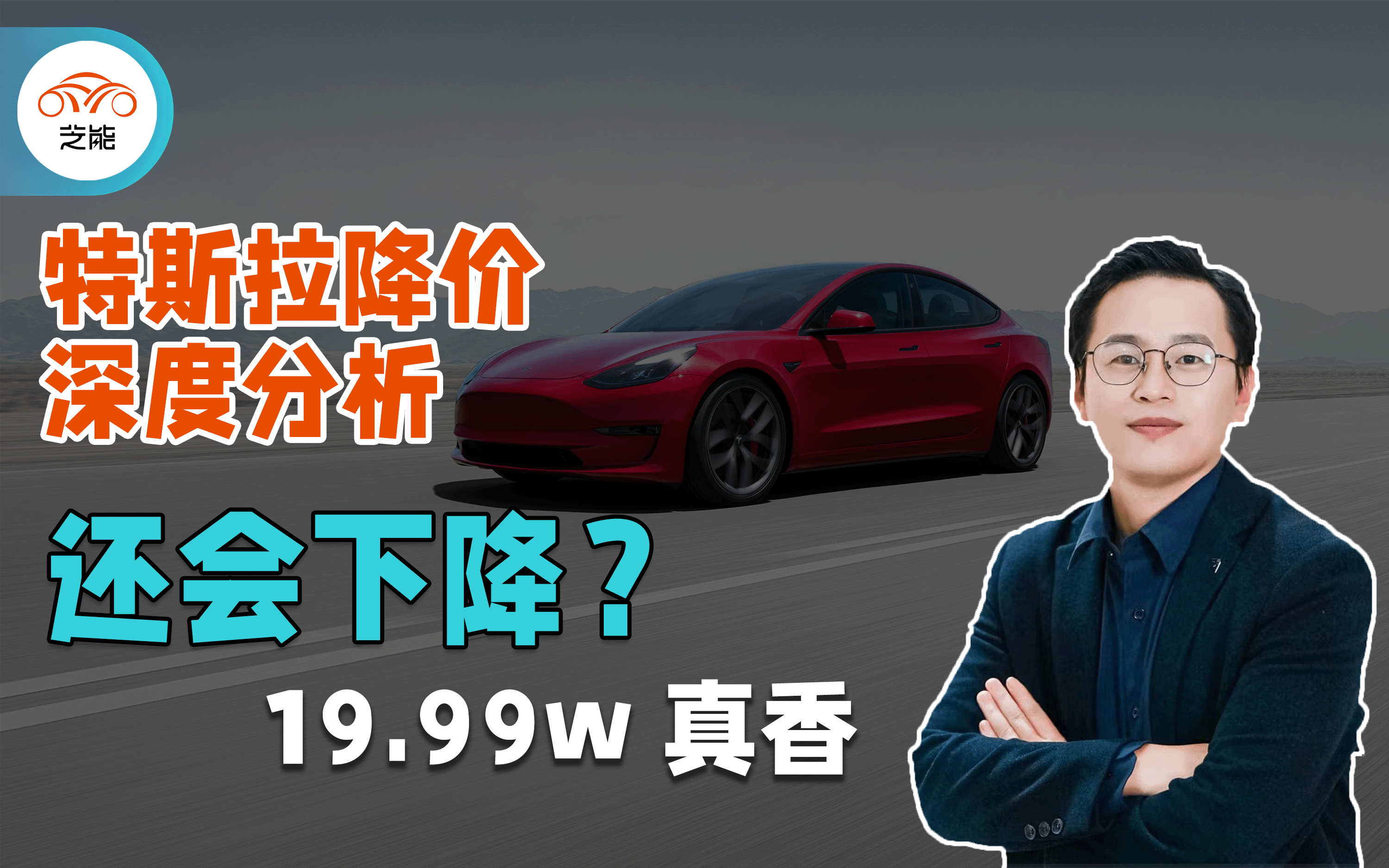At the beginning of 2023, the Chinese new energy vehicle market is experiencing dramatic changes. BYD took the lead, and other existing and new forces like Changan, Chery, SAIC Roewe, North-South Volkswagen, NIO, and Leapmotor raised their prices in unison.
It is not difficult to understand why there is a broad-based price increase: after the subsidy for new energy vehicles declined, automakers passed on part of the cost to consumers. But what is “difficult to understand” is Tesla’s decision: they lowered their prices instead of raising them, and such a price cut was comprehensive – applied globally. Moreover, the price cut was so drastic that it triggered lawsuits by existing customers.
Today, we would like to discuss two issues: why can Tesla lower its prices? And why does it need to lower them?
Why can Tesla lower its prices?
In a nutshell, Tesla has the capability to do so, which sets it apart from other automakers. Here, we examine Tesla from the four aspects of cost control, sales model, capacity utilization, and vehicle lifecycle.
● Tesla’s cost control: Currently, Tesla’s cost control is outstanding among automakers.
◎ Scale effect
First, the scale effect has given Tesla the ability to negotiate with suppliers and effectively control the costs of each unit. It is estimated that Tesla’s total capacity may reach over 2 million by 2023, which would enable them to further negotiate and lower costs with raw material and component suppliers.

For electric cars, the battery is the big cost. Currently, Tesla is the biggest customer of CATL, giving it significant bargaining power over the price of batteries. As battery prices are expected to drop soon, Tesla can stock up on orders early.
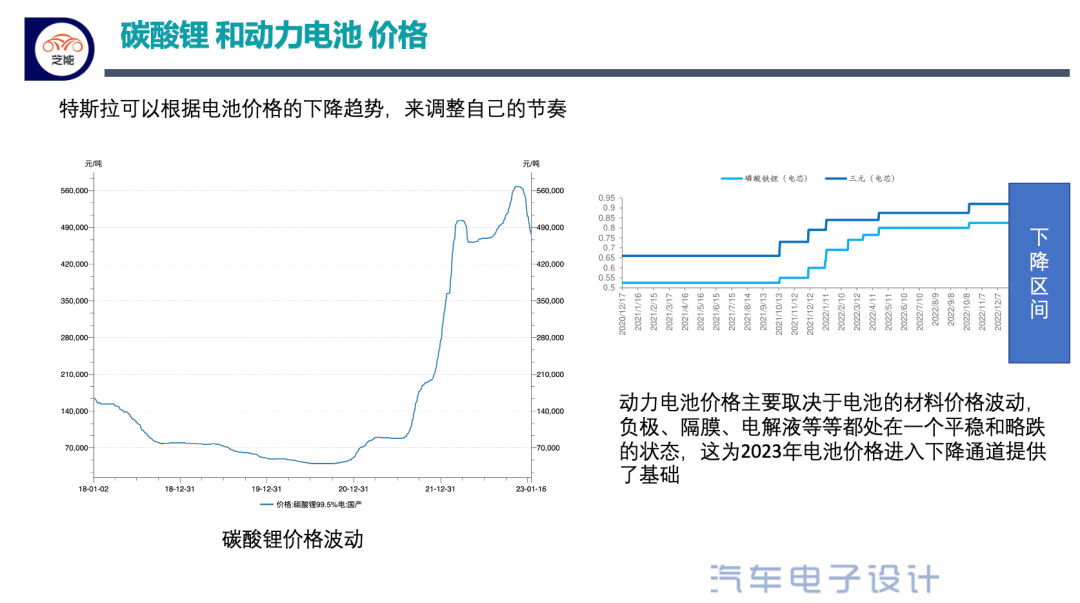
Because of Tesla’s aggressive energy recovery strategy and efficient electric drive system, they can achieve relatively high mileage on low battery capacity. Therefore, we can see that the battery cost of Model3 is almost on par with seals. Although Tesla is purchasing batteries, the overall battery cost is not much higher than BYD’s. In comparison to other automotive companies except for BYD, scale effect is a significant strategic advantage.
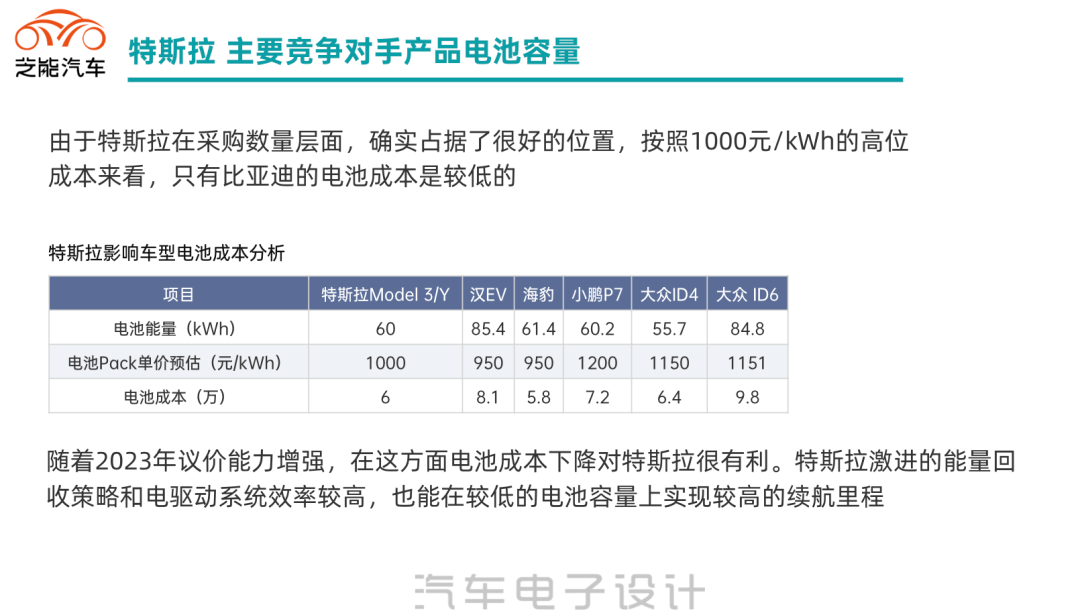
◎ Perspectives on electronic parts
We can see that Tesla has done a lot of customization and adopted proprietary design for core chips; not only has it reduced the impact of large chip suppliers but also avoided the consideration of chip universality. From the cost of a single chip, there is still some price-performance ratio.
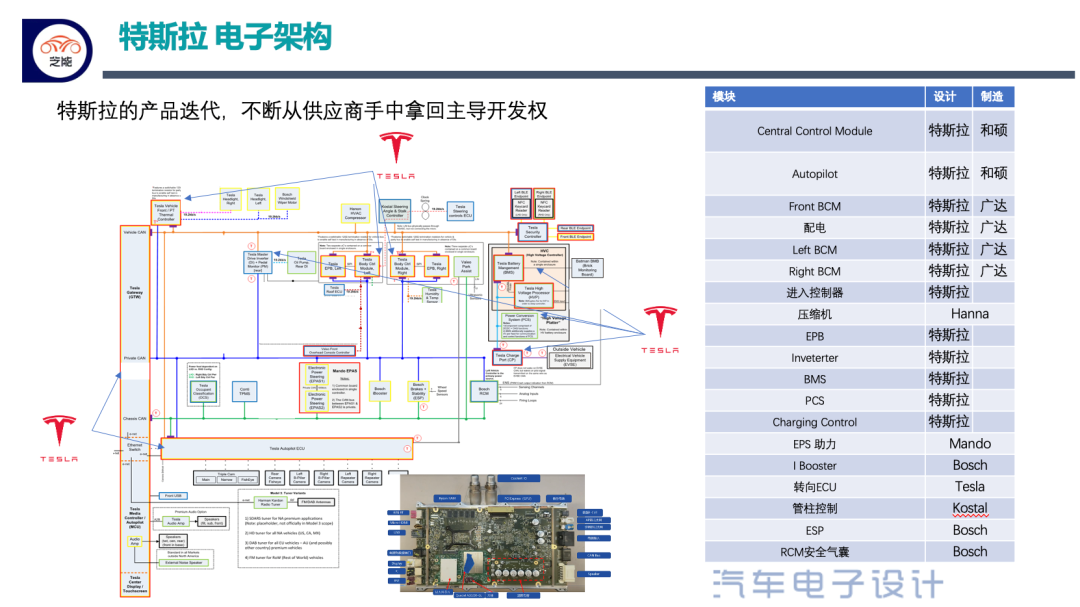
◎ In terms of manufacturing technology
Tesla has imported integrated casting technology since 2020, integrating 80 parts previously produced by stamping and other technologies into one casting part, reducing manufacturing costs by 40%. With the expansion of scale of production, the cost of vehicle body is continuously decreasing.
● Tesla’s Sales Model
Tesla has created a direct sales model, abandoning dealerships, which can reduce the sales cost of the vehicle by 2.5-7.5%. On the sales company end, the contribution margin can be increased by around 2%.Direct pricing mechanism can reduce discounts and sales incentives. Therefore, Tesla can fully utilize the 4.5%-9.5% difference in the sales level to engage in price wars.
● Tesla’s Production Capacity Utilization
As production capacity increases, Tesla is facing the challenge of production capacity utilization. The higher the production capacity utilization rate, the lower the cost can be controlled; otherwise, it will be disadvantageous to cost control if the actual production volume cannot reach capacity, such as the Shanghai factory’s current production capacity of over 100,000 per month.
● Product Lifecycle of Main Selling Models
Lastly, although Tesla is continuously improving technology, such as the introduction of heat pumps and the latest entertainment systems, to Chinese consumers, the Model 3 is an old car without any discount, and the Model Y is also an aged product. Price reduction is a reasonable choice for the old car models.
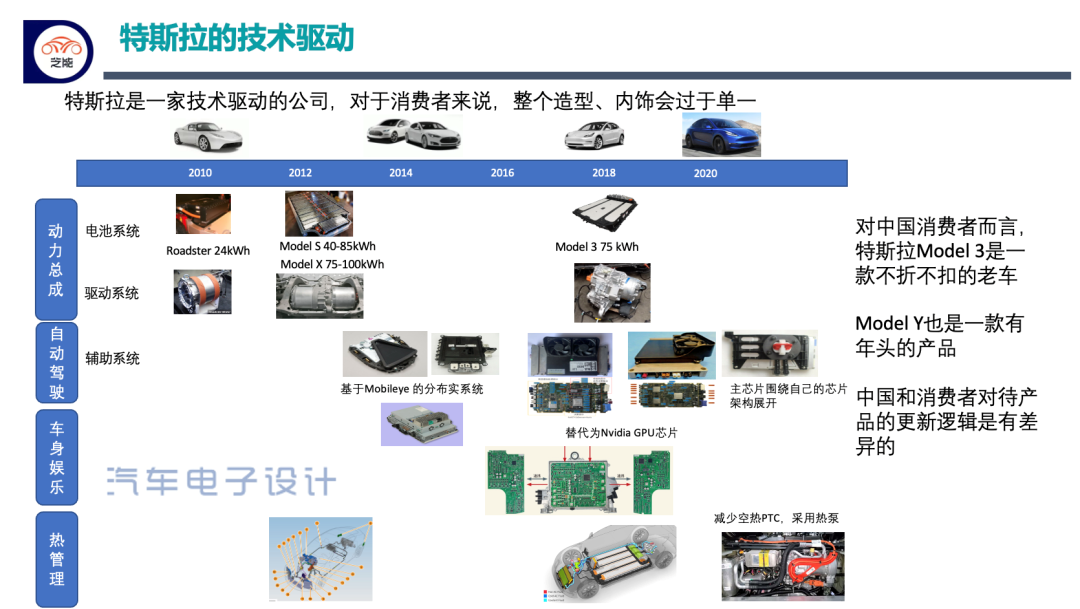
The initiative and passivity of Tesla’s price reduction
After discussing the feasibility of Tesla’s price reduction, the next question is why Tesla started a price war at this point in time? I believe Tesla has several main objectives:
◎ The need for a statement: After Elon Musk’s attention has been diverted to tweeting, he needs to make a statement about Tesla’s entrepreneurial spirit.
The turning point of Tesla does come from after Elon Musk proposed to buy Twitter. Under the continuous pressure of external doubts as Tesla’s stock is continuously sold, Elon Musk needs to confirm to investors worldwide that his work focus has returned to Tesla.
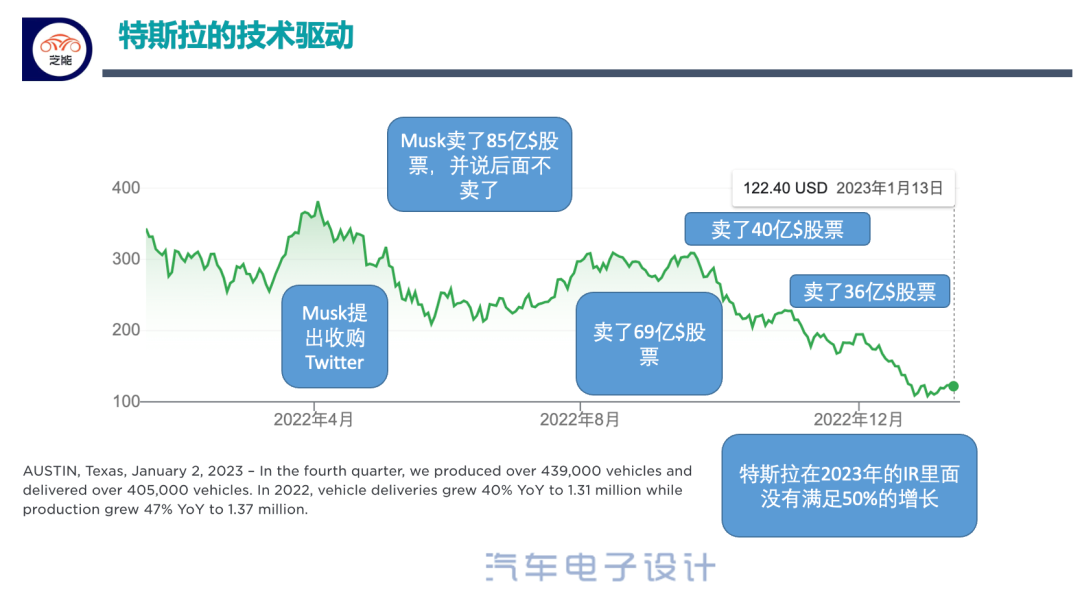
◎ Economic Prediction
In the global automobile market, from supply shortages to ample supply, it is inevitable for prices to decline. Leading the price reduction reflects Elon Musk’s prediction of the economy and demand. In fact, he has insightfully strategized through data to anticipate the possibility of an economic recession in Europe and America, allowing Tesla to accumulate a sufficient order pool before the economic downturn.◎ Seize the Opportunity to Lead
Finally, the market where Tesla reduced prices is under the greatest pressure and has the lowest order volume, thus it is the place where seizing the opportunity is most crucial. The chip supply crisis of the past few years has hindered car production, artificially raising car prices. As inflation and car chip supply recover, car companies will enter a period of adding inventory. The current stage is a good time for Tesla to seize the opportunity to lead.
Short-term and Long-term Impact of Tesla’s Price Reduction
The impact of Tesla’s price reduction on the penetration rate of electric vehicles in China and the world is worth exploring.
● Impact on the Same Category of Chinese Electric Vehicles
The impact of Tesla’s latest price reduction (Model 3’s starting price is now 229,900 yuan) is that it shakes consumer’s purchase concepts. Initially, people believed that Chinese-branded electric vehicles had higher cost performance, especially products priced above 150,000 yuan. Such products are usually compared to Tesla in terms of endurance, acceleration, configuration, appearance and interior, and intelligent level. Tesla is the most famous benchmark product in the sub-market. Now, the benchmark product’s technology remains the same, but the price has been reduced.

Model Y’s price reduction was equivalent to 68,600 yuan (resulting from two price reductions and subsidy rollback). Similarly, it has an impact on the value reference of the entire SUV market. For example, Volkswagen’s ID4 series, Xpeng G9 and Leapmotor C11, etc.
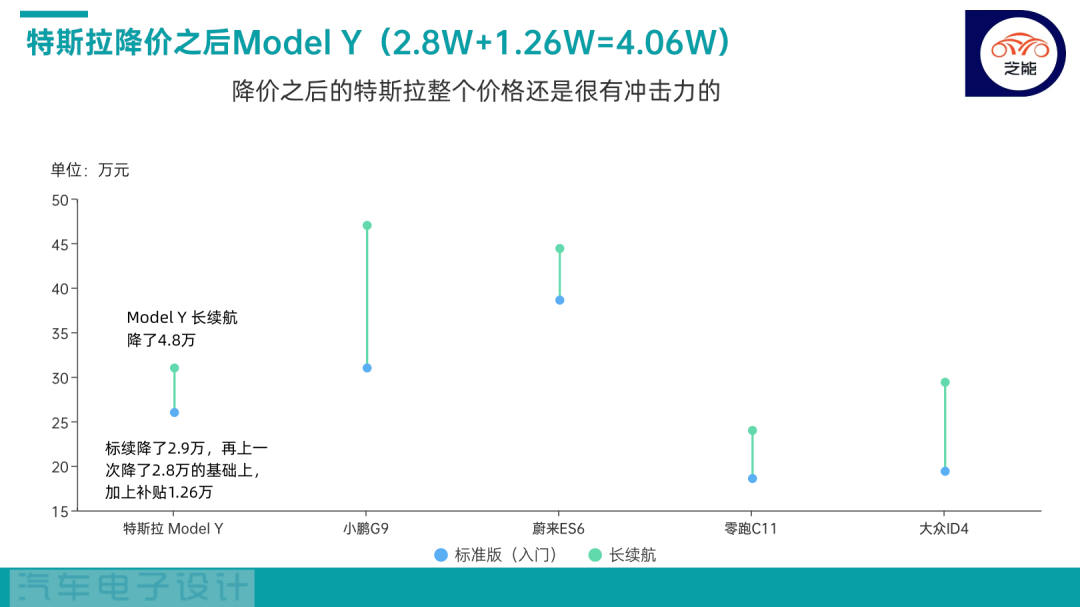
Many friends are worried that Tesla’s price reduction will affect the pure electric development of domestic brands. Personally, I think Chinese consumers are facing an unprecedented speed of electric vehicle updates. Tesla’s latest price reduction suddenly reveals the strong and weak abilities of Chinese car companies. Only Chinese car companies that are able to keep up with this wave of product cost performance can survive better. This is also the significance of the subsidy rollback. The real test of marketization has arrived.● Impact on Joint Venture Fuel Vehicles at the Same Price
For joint venture fuel cars in the same price range, they have an advantage in brand awareness, such as Toyota, Honda, and Volkswagen products, which have mature advantages in technology, residual value, and after-sales service. However, with Tesla’s foray into this price segment, it has indeed had a significant impact on joint venture car manufacturers.
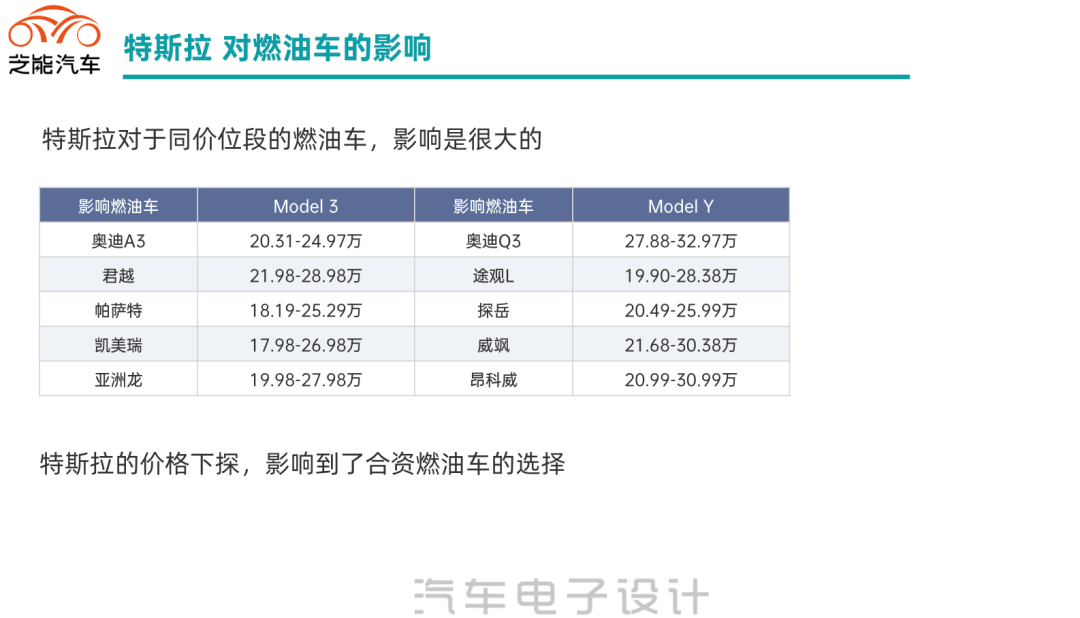
In my understanding, Tesla’s price reduction has had the greatest impact on the fuel car market in first-tier and second-tier cities. The electric vehicle market foundation here was already established, and Tesla’s price reduction promoted customers to quickly switch from fuel cars to Tesla’s pure electric products.
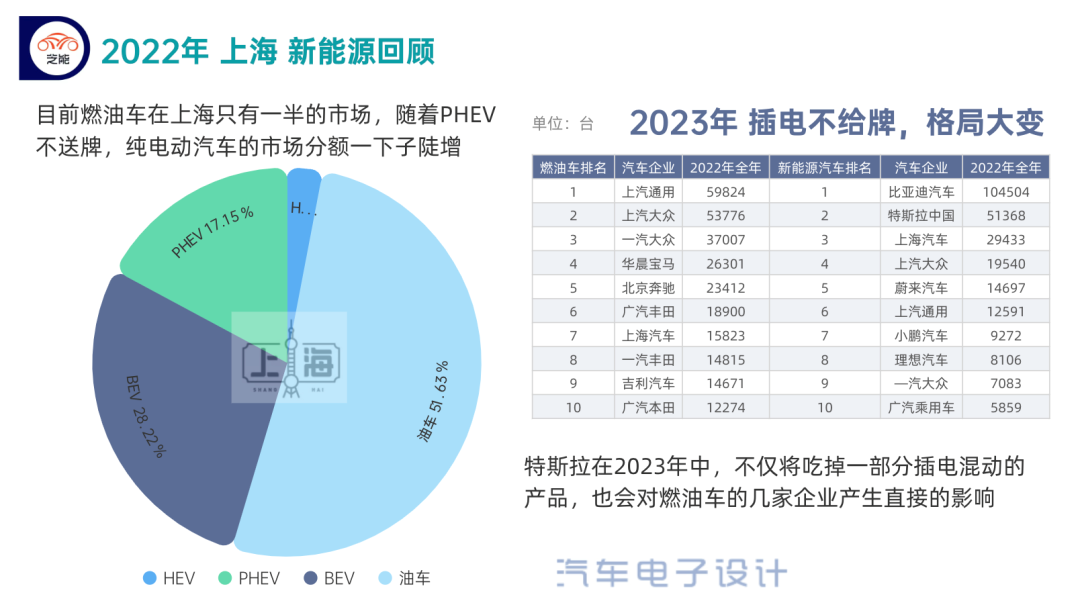
● Impact on Global Automakers’ output of Electric Vehicles
From a global perspective, Tesla has narrowed the living space of its competitors.
Tesla’s round of price reductions truly highlights the ability to intensify competition. Chinese car companies have not experienced this, but in the global electric vehicle market where supply is not sufficient, the platform iteration and product design are slow, and it is indeed a bit difficult to keep up.
Finally, we would like to say: Tesla’s price reduction is a major event, which has a very significant effect on the pricing of electric vehicles. Users do not have to buy Tesla, but users who buy electric vehicles will definitely compare with Tesla. This will bring significant changes to the entire electric car industry, and the global price war has begun.
We believe that Tesla’s ability to reduce prices is a full display of its production capacity and cost advantages at this point, which will directly eliminate many car companies that cannot sustain their investments. The test of new energy vehicles in 2023 will challenge the operational capabilities of car companies and raise higher requirements for car companies to grasp the pace. Whether to continue to stay in the game requires sufficient accumulation and bottom cards.
This article is a translation by ChatGPT of a Chinese report from 42HOW. If you have any questions about it, please email bd@42how.com.
